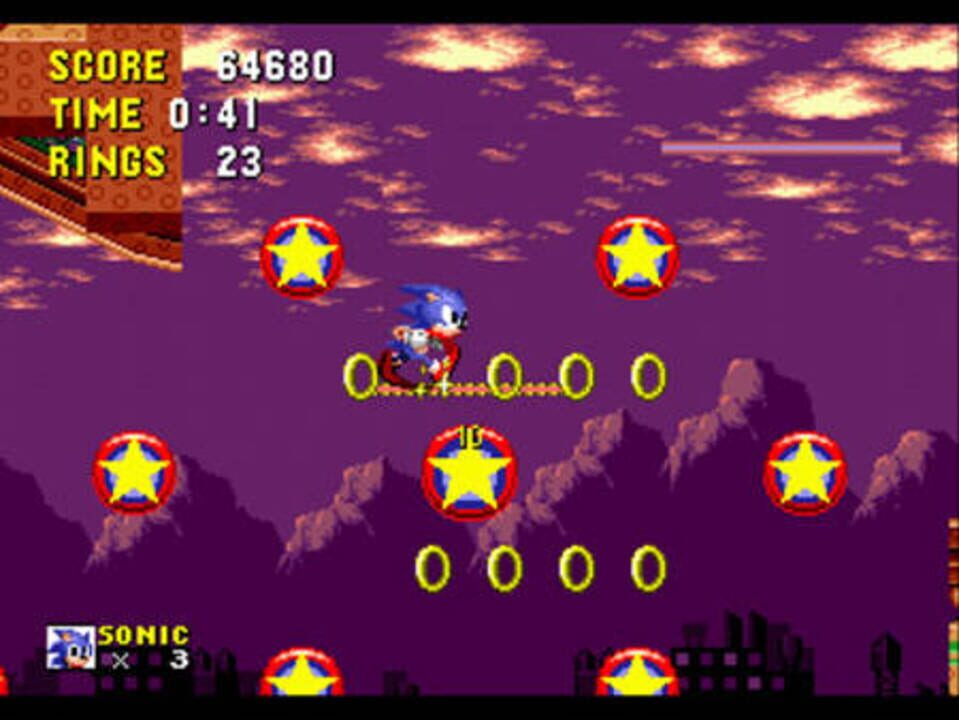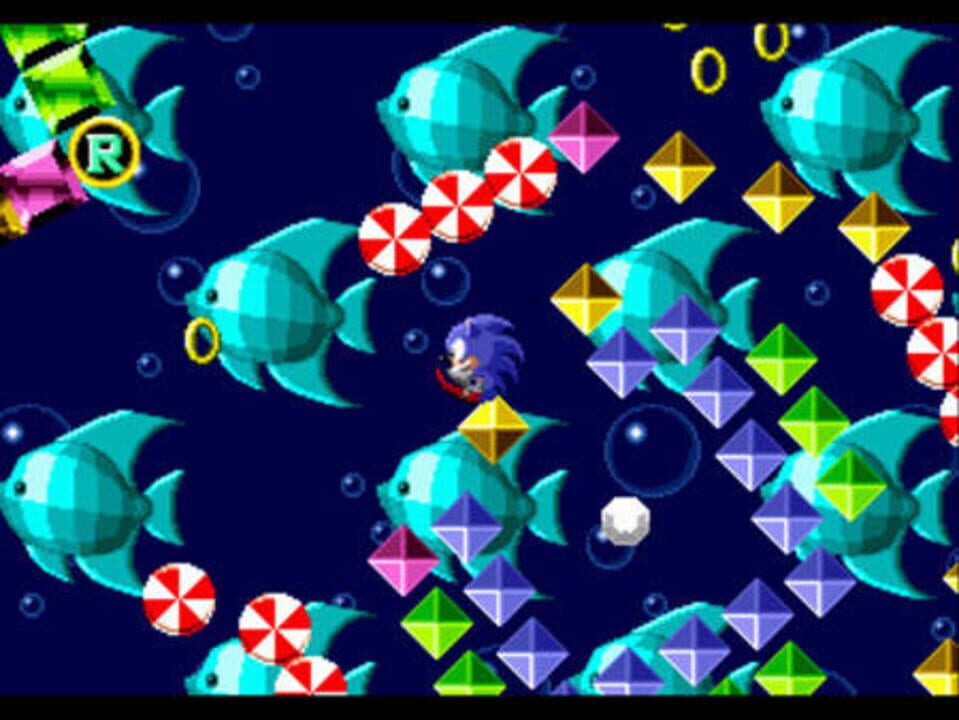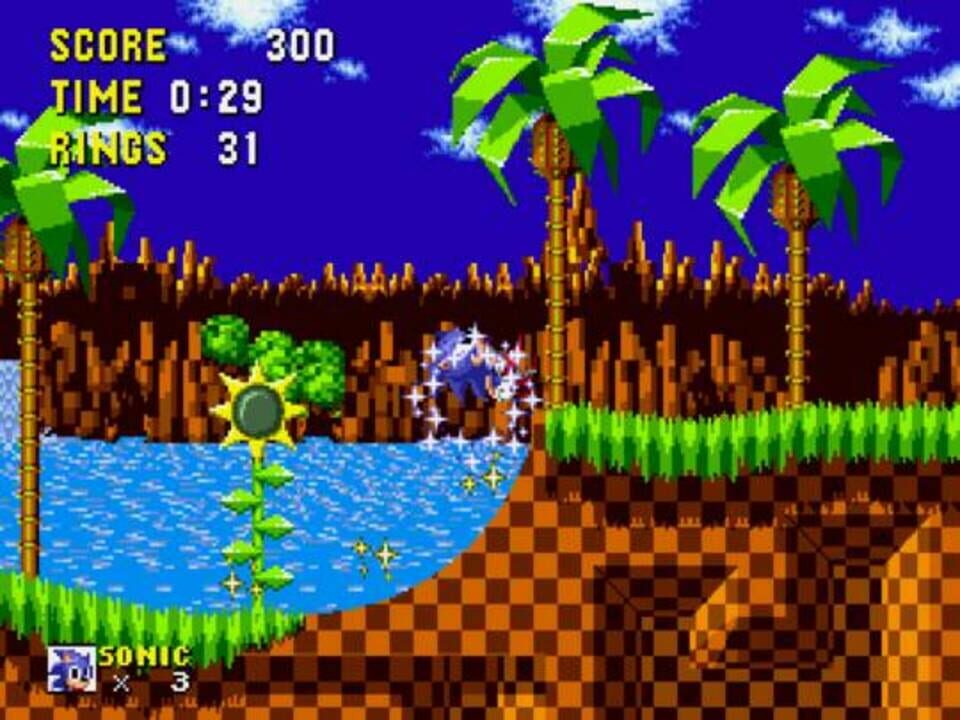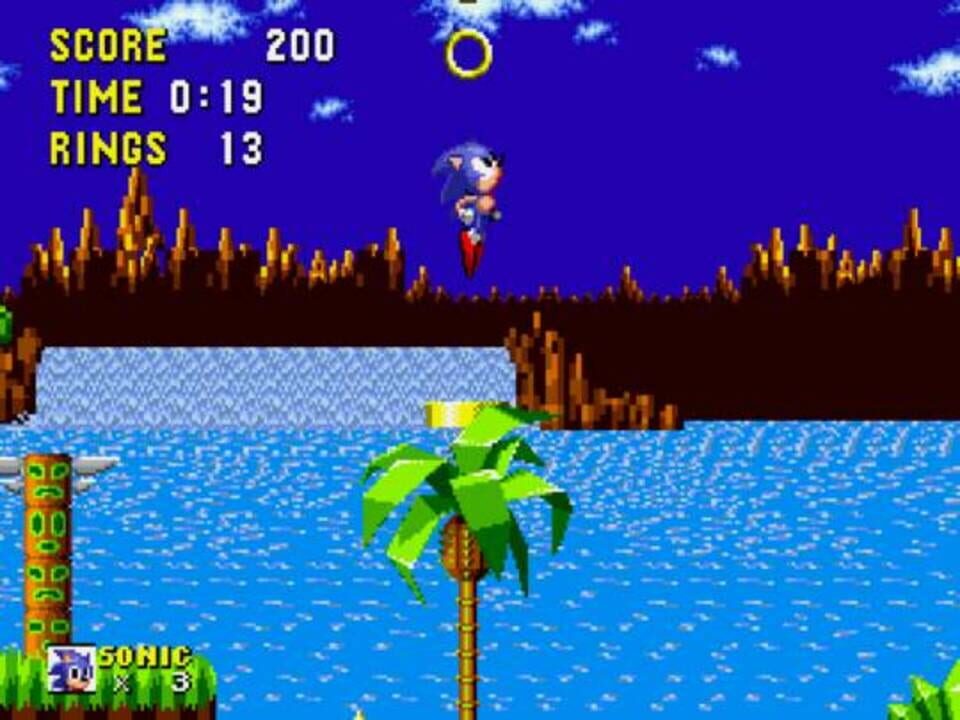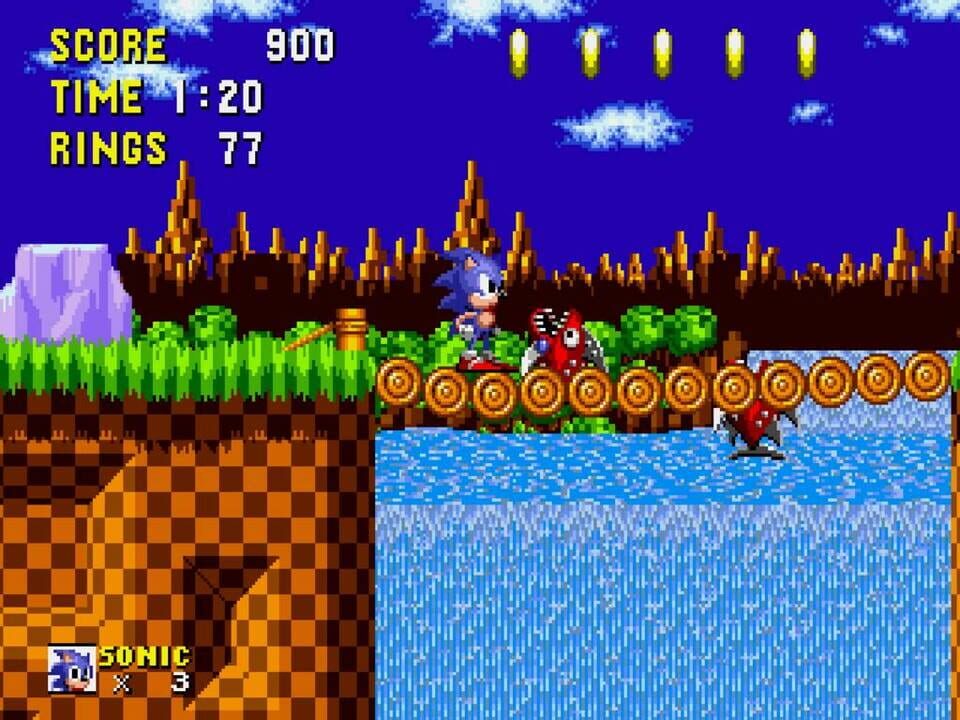Sonic the Hedgehog
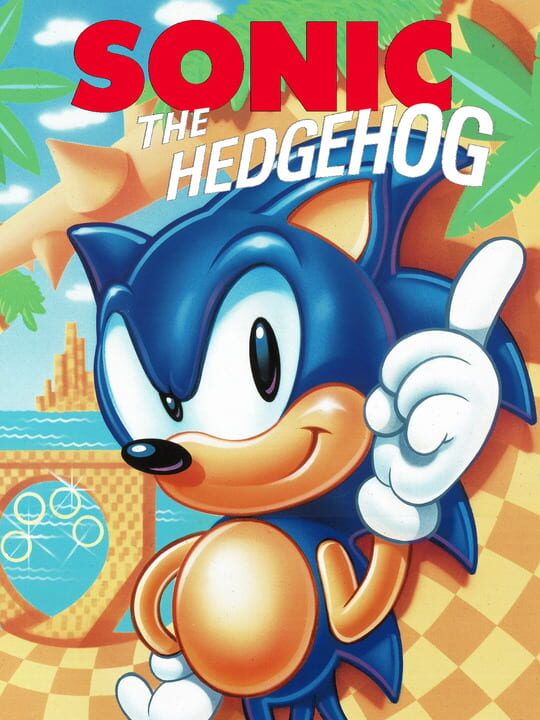
Game Information
Original Release Date: June 23, 1991
Platforms: Arcade, iOS, PC (Microsoft Windows), PlayStation 3, Sega Mega Drive/Genesis, Wii, Xbox 360
Involved Companies: Sonic Team, Sega, Tec Toy
Genres: Platform
Summary: Sonic the Hedgehog is a 2D, side-scrolling platformer, whose gameplay centers around Sonic's ability to run at high speed through levels incorporating springs, slopes, high falls, and loop-the-loops. The levels contain hazards in the form of robots ("badniks" in the Western game manuals) in which Dr. Robotnik has trapped animals. Although destroying a robot frees the animal within, this is not required to complete the game. The player must avoid rows of sharp spikes, falling into bottomless pits, being crushed by moving walls or platforms, and drowning (which can be avoided by breathing air bubbles periodically released from vents). Sonic's main attack is his spin, where he curls into a ball and rotates rapidly (damaging enemies and some obstacles). This can be performed by jumping in the air or rolling on the ground. Scattered around each level map are gold rings and collecting 100 rings rewards the player with an extra life. Rings are a layer of protection against hazards; if Sonic has at least one ring when he collides with an enemy, he will survive. However, all his rings will be scattered; they will flicker and disappear in a few seconds if they are not picked up again. If Sonic is hit without any rings, he loses a life. Although shields and temporary invincibility may be collected to provide additional protection, certain hazards (such as drowning, being crushed, falling down a bottomless pit or running out of time) will cost Sonic a life regardless of rings or other protection. The game is divided into six zones (Green Hill, Marble, Spring Yard, Labyrinth, Star Light, and Scrap Brain), each with its own visual style and enemies. A player must navigate through each zone (subdivided into three acts) to progress. At the end of each zone's third act, the player confronts Dr. Robotnik (who pilots a different vehicle each time) in a boss fight. After the sixth zone, the player continues directly to the Final Zone for a last encounter with Robotnik. They begin with three lives (power-ups and rings add more), which are lost when Sonic collides with hazardous enemies (or objects) without rings, falls off-screen or exceeds an act's ten-minute time limit. Lampposts acting as checkpoints allow Sonic to return to the most-recently activated post when he loses a life. If he loses a life as a result of time running out but has another life, the timer will reset to 0:00 when he returns to the checkpoint. If all lives are lost at any point in the game, the game over screen will appear (when the player can return to the beginning of the act with three lives, if they have any continues). When Sonic reaches the end of act one or act two of a zone with at least fifty rings, a large ring appears through which he can jump to enter a Special Stage (a "Secret Zone" in the original Genesis manual). In each of six Special Stages, Sonic bounces off the bumpers and walls of a rotating maze in spin attack. Although the player earns a continue with each 50 rings found, their main goal is to obtain the Chaos Emerald at the end of the maze without colliding with a "goal block" (which ends the level).

